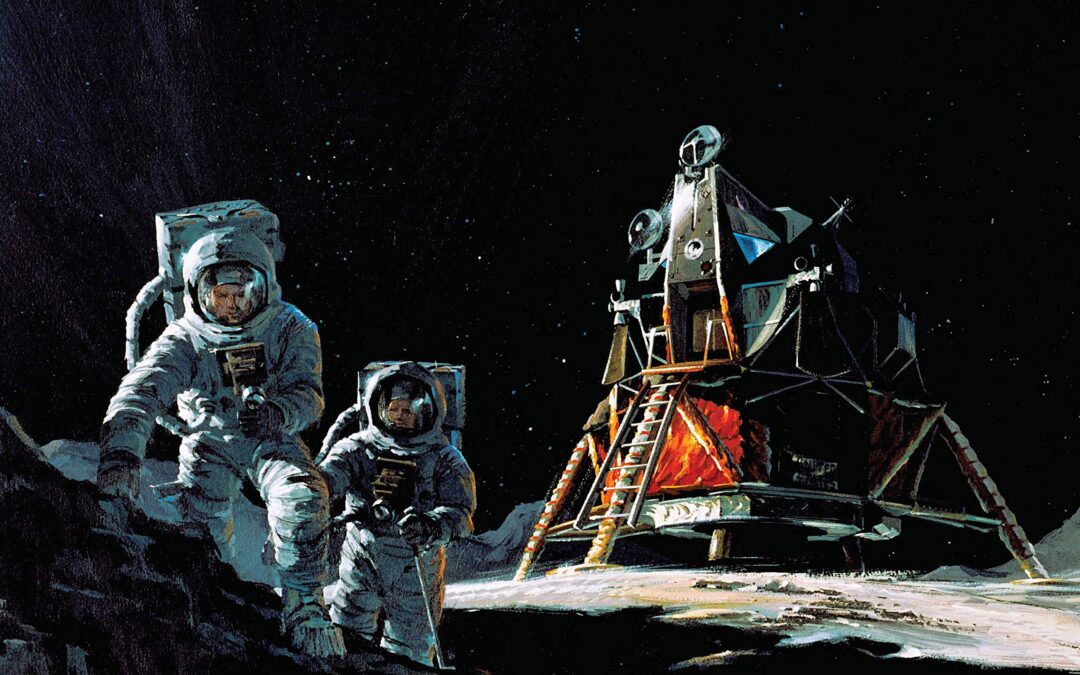
A beautiful evocation of racing at Silverstone and Snetterton circuits in the 1950s – carefree days when the legendary aces of the day (Moss, Hawthorn, Salvadori, Ireland and others) would compete against all-comers in cars both famous and little-known. All the approximately 150 photos were professionally taken but have not previously beern used.

Exactly the sort of archive gem that Duke is so good at unearthing” Autosport
A documentary on endurance sports car racing, featuring a World Championship event at Mosport – Canada’s premier circuit. Distinguished British racer Brian Redman narrates and participates! Many racing experts have written that it’s the best documentary ever on the subject.
The film features thrilling sequences seldom attempted before, filmed from inside Redman’s car as it battles for the lead, passing and being re-passed during the Mosport 6 hours 1981. Also featuring the 1983 Labatt GT at Mosport, a round of the IMSA Camel GT and Endurance Championship. The annual race attracted entries from Hurley Hayward and Al Holbert, with victory finally going to Bob Tullius and Bill Adam driving the spectacularly exciting Group 44 Jaguar XJR-5 prototype.
“This is exactly the sort of archive gem that Duke is so good at unearthing, remastering and sharing with us. Focusing on the 1981 Mosport 6-hour world sportscar round, the 80-minute film is narrated by Brian Redman, often from inside the car. You get IMSA series footage from the Canadian venue, too” Autosport
The Wright Stuff
The Wright Stuff
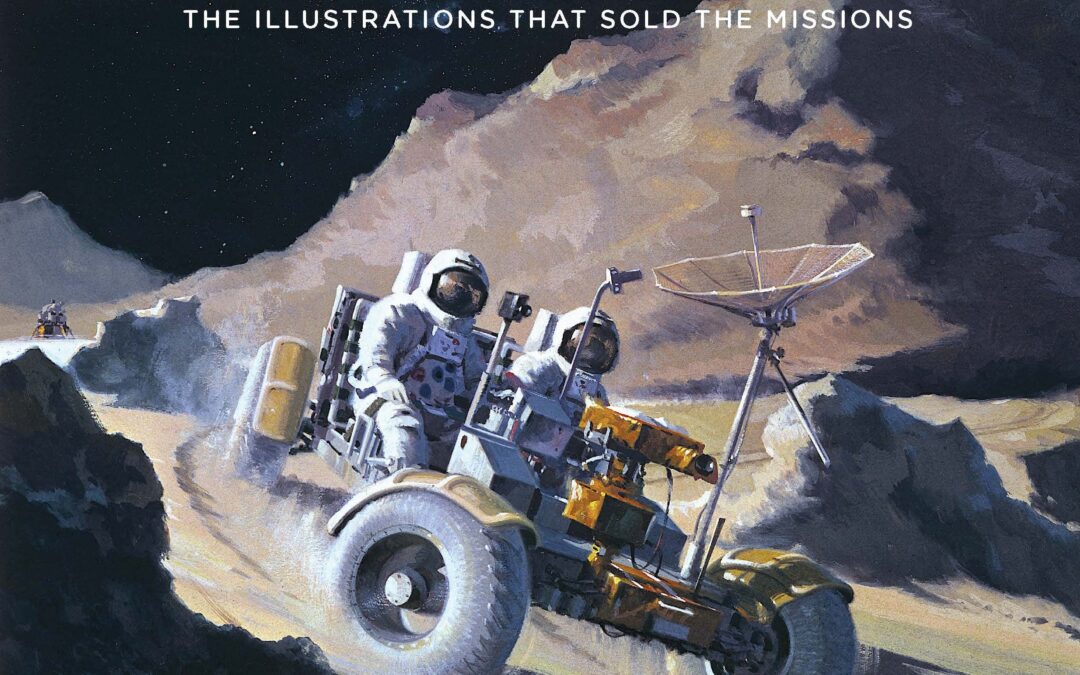
In this expanded collector’s edition of The Art of NASA, complete with a paper model Lunar Module and a poster, explore over 200 stunning artworks commissioned by NASA to sell its missions.
Formed in 1958, NASA has long maintained a department of visual artists to depict the concepts and technologies created in humankind’s quest to explore the final frontier. Culled from a carefully chosen reserve of approximately 3,000 files deep in the NASA archives, the 200+ awe-inspiring illustrations presented in this special boxed edition are complemented by:
- 32 pages of new material
- A paper model of the Lunar Module
- A rolled poster
- A sheet of four postcards
- A new foreword by astronaut Tom Jones
From space suits to capsules, from landing modules to the Space Shuttle, the International Space Station, and more recent concepts for space planes, The Art of NASA presents 60 years of American space exploration in an unprecedented fashion. All the landmark early missions are represented in detail—Gemini, Mercury, Apollo—as are post-Space Race accomplishments, like the mission to Mars and other deep-space explorations.
The insightful text relates the wonderful stories associated with the art. For instance, the incredibly rare early Apollo illustrations show how Apollo might have looked if the landing module had never been developed. Black-and-white Gemini drawings illustrate how the massive NASA art department did its stuff with ink pen and rubdown Letraset textures. Cross-sections of the Apollo–Soyuz Test Project docking adapter reveal Russian sensitivity about US “male” probes “penetrating” their spacecraft, thus the androgynous “adapter” now used universally in space. International Space Station cutaways show how huge the original plan was, but also what was retained.
Every picture in The Art of NASA tells a special story. This collection of the rarest of the rare is not only a unique view of NASA history—it’s a fascinating look at the art of illustration and a glimpse of NASA history like no other.
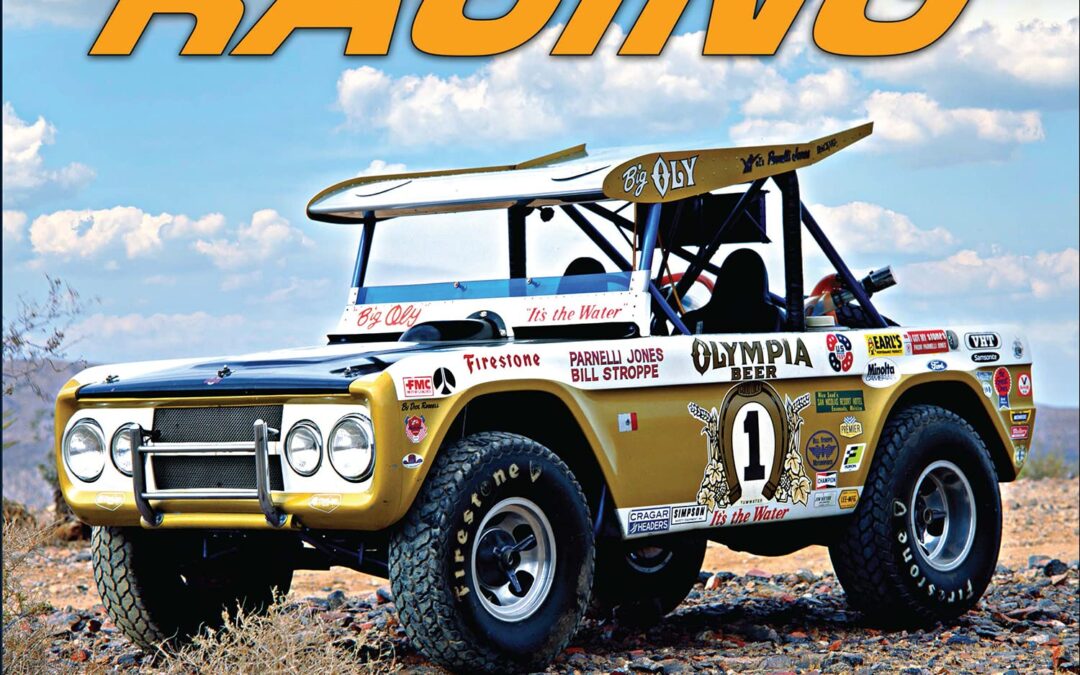
Stuffed with never-before-seen photography, stories, and race results, Bronco Racing: Ford’s Legendary 4×4 in Off-Road Competition is the most definitive publication ever on this marque’s racing success!
In 1965, legendary builder and off-road aficionado Bill Stroppe was one of the first to test the new Bronco in off-road conditions. In March 1966, Stroppe introduced his racing Bronco to the press at the Bronco Roundup, where racing ace Ray Harvick pounded the Santa Ana river bottom with his tuned machine to win Top Eliminator at the Four-Wheel-Drive Grand Prix at Riverside, and the rest is history.
Ford’s Bronco dominated the off-road racing scene and captured coveted titles in the Mint 400, Baja 500 and dirt racing’s crowning achievement: the Mexican 1000/Baja 1000. As the first-generation Bronco gave way to the second-generation machine (1978), racing Broncos continued to devour the competition until Ford pulled the plug on the rig in 1996.
Complementing the legendary Broncos featured here, you will also hear the tales of their wranglers, including Parnelli Jones, Rod Hall, Larry Minor, Shelby Hall, James Garner, Don Barlow, James Duff, Bill Rush, and the aforementioned Ray Harvick and Bill Stroppe. The infamous mounts covered include Big Oly/Crazy Colt, Pony, Big Hoss, Crazy Horse, Stove, and Colt.
Diligently penned by Bronco racing historian John Elkin, this book is the most comprehensive collection of historical accuracy ever authored on this subject. Pull your belts tight and wipe your goggles clean one last time with Bronco Racing: Ford’s Legendary 4×4 in Off-Road Competition!
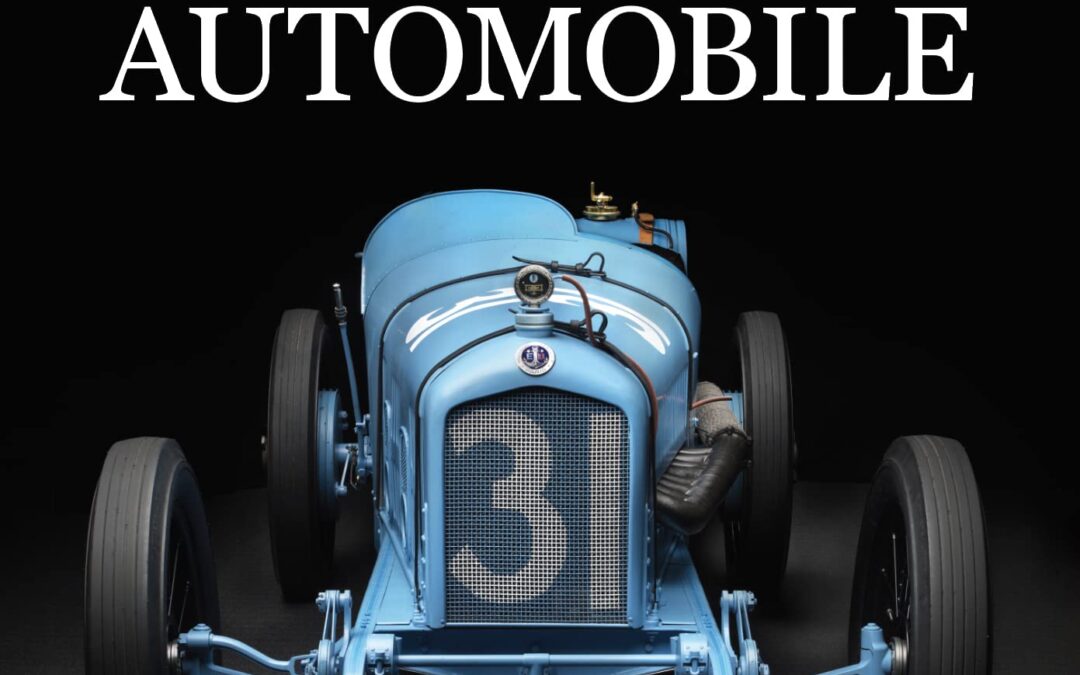
In the last one hundred years, cars have shaped our lives. Other everyday cultural artifacts, such as watches, telephones, musical instruments, and televisions, have certainly had influence, but the car is by far the most significant. Now, change is coming for the car, as it is for so many other industrial artifacts. Once, cars were distinct machines. Now, they are evolving into multifunctional digital devices. New fuels, new modes of travel, and new technologies are disrupting the traditional role of the much-loved family car.
What is to become of this material legacy? Should we really let go of it? Without memory, personal and shared, we lose our way, our individuality, and our culture. This proposition is at the heart of The Archaeological Automobile.
Miles C. Collier’s landmark approach uses an “archaeological mindset” to interpret the automobile as a cultural artifact in six themes:
The Development of the Automobile describes how the car emerged from a pressing human need for mobility, tracing our relationship with horses, our invention of the bicycle, and how we turned our backs on both as daily transport for the allure of the car.
The Rise of the Collectible Automobile asks how and why ratty relics decaying in recycling yards can become valuable and treasured collectibles. It reveals the effect of cultural influences on our perception of cars and on the dynamics of the collector car market.
The Archaeological Mindset picks up a wrench, gets into the workshop, and tracks the restoration of a 1919 Ballot Indy car using hands-on experience and background research while deploying the “archaeological imagination.” The archaeological clues are in the detail.
Collecting and the Archaeological Automobile deals with the characteristics of collecting. Why do we accumulate “stuff”? Is it greed? Is it passion? Is it a desire for legacy? And what makes a “good” collection? Is it bling? Is it style? Is it material worth? The answer lies in connoisseurship.
Restoring the Archaeological Automobile debates the merits of diverse restoration strategies and the reasoning behind them, including the tricky question of how to repaint the tilt-front nose of a 1964 Alfa Romeo GTZ racing car and still preserve the evidence of forty years of accumulated sandblasting and chipping.
The Archaeological Automobile of the Future is a call to action. Cars as we know them are customarily trashed, government regulations encourage indifference, and the skills and knowledge associated with fixing them are slowly vanishing as we lose older generations of experienced craftsmen. How can we preserve humanity’s treasure trove of automotive knowledge for generations to come?
Filled with engaging stories and practical examples, this is a handbook of the most thoughtful practices, not just for automobile owners and the historical car industry, but for collectors, professionals, and users of all kinds of industrial era artifacts.
The Archaeological Automobile combines scholarship, pertinent anecdotes, style, and experience to provide a stimulating account of why we should all be archaeologists now.



What kind of car is that? It looks like a big Beetle! If ever there was a car in search of a context and market, it was the VW Type 4. Volkswagen’s first foray into the upscale sector brought engineering innovation to Wolfsburg. It also tried to convince worldwide buyers that VW still had the right stuff. With design origins in the Porsche consultancy, the signs were hopeful. However, globally, the automarket was rapidly changing.
The VW Type 4’s portfolio ran to unitary construction and fuel injection, but had to face fancy competition from Detroit’s European subsidiaries. All the while, VW was searching for its future road, and faced challenging developments. The fuel crisis and Japanese competition in North America kept the pressure on at Wolfsburg.
Could the VW 411 and 412’s solid traditional virtues carry the day? Then and now the Type 4’s unbreakable VW quality, and flat out sustainability, appealed to air cooled devotees. The 411 and 412 brought a new dimension in comfort to VW, and its hardware design was utilized by the air cooled clan both on and off road. The Type 4 even had a sports car connection, and never lost the power to surprise.

From the earliest days of the automobile, car manufacturers lured customers to their showrooms displaying various machines ranging from two tons of luxury, comfort and chrome to the thrill of a no bones, lightweight, high horse-powered coupe designed to be the quickest and fastest in the industry.
”What wins on Sunday, sells on Monday” pushed Detroit’s Big Four (GM, Ford, Chrysler and AMC) to produce selected factory-built production cars with gutted trim, lightweight frames stuffed with high cubic-inch powerful engines with modified fuel systems. Rivalries quickly flourished as Detroit’s finest teams battled out across the country for supremacy.
Factory-backed legends Dick Landy, ”Dyno” Don Nicholson, Sox & Martin, Bill ”Grumpy” Jenkins, Bob Glidden, Wally Booth, Paul Blevins, Richie Zul, Warren Johnson, ”Akron” Arlen Vanke, Billy Stepp, Gapp and Roush, Don Carlton, Butch Leal, and many others from Jr. Stock to the giants of Pro Stock, come alive in this photo gallery of Pro Stock Drag Racing.
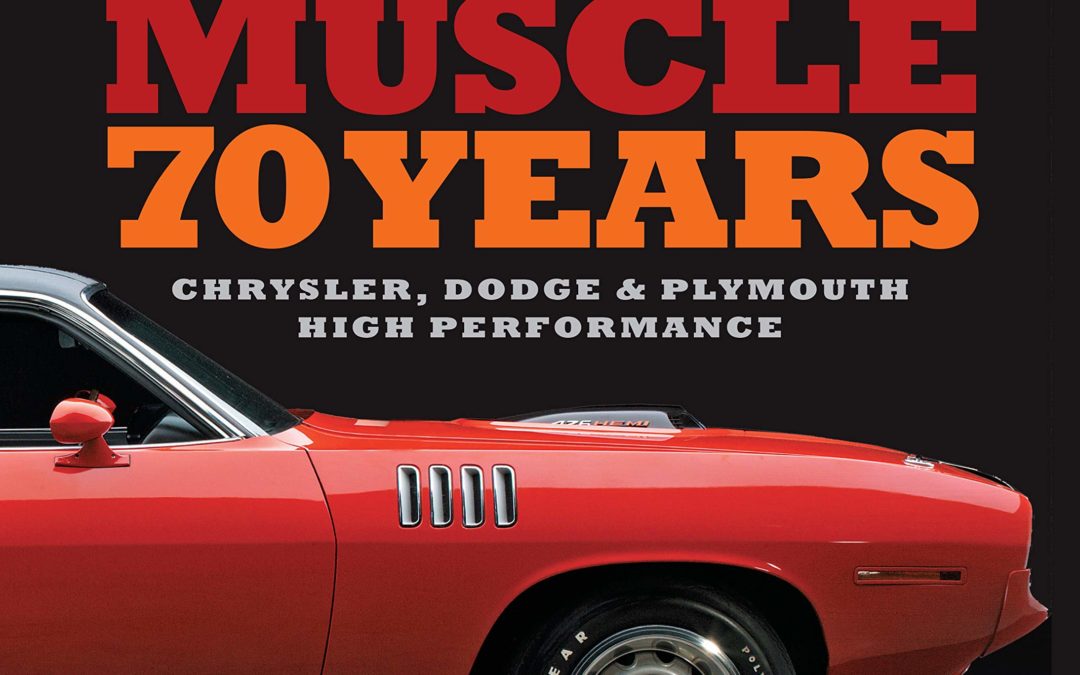
Hemi Muscle 70 Years is the complete illustrated story of the legendary engine and the cars it powered. Author Darwin Holmstrom explores how Chrysler’s Hemi engine became the number one choice for drag racers and stock car racers across the country, campaigned to great success by drivers like Richard Petty, Don Garlits, David Pearson, Sox and Martin, and more.
In 1950, Chrysler debuted a potent high-performance overhead-valve V-8 engine. Originally called the FirePower, it would soon be better known by the name “Hemi.” Intended to power Chrysler’s luxury cars, the Hemi found a higher calling: humiliating its competitorson the street and at the race track.
On top of learning how the Hemi engine came to be, you’ll also see how the Hemi remained the engine to beat on the street, stuffed into some of the most desirable performance cars in automotive history: the ‘Cuda, Road Runner, Charger, GTX, and Challenger, to name a few. The Hemi made such a lasting impact that Chrysler revived it as the top engine for the twenty-first century Challenger and Charger.
Today, Hemi is a household name, known to enthusiasts and consumers alike, often imitated, never duplicated. Having found its way into both sports cars and luxury cars, you’ll often hear: “Hey, has that thing got a Hemi in it?” This book answers “yes”…and offers the full exciting story!
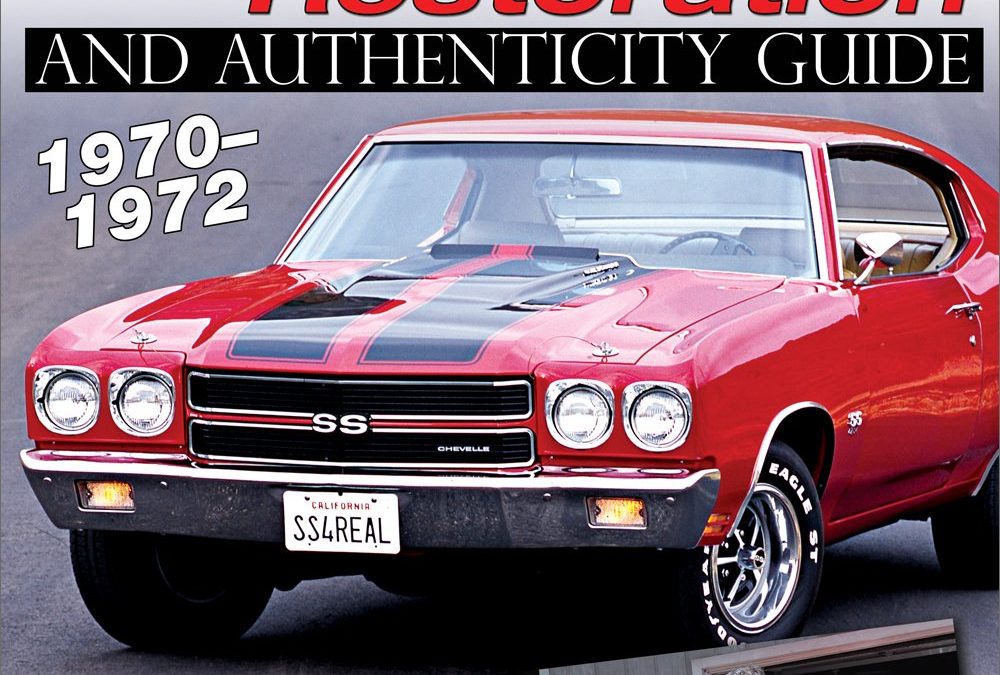
The high-water mark of the muscle car era is usually credited as 1970, and for good reason; Chevrolet was now stuffing high-powered 454 engines into Chevelles. Adding a larger displacement above the still-available 396 (402) offered buyers the option to order the most powerful production car of that era. The 1970-1972 Chevelles remain the most collectible of the model to this day.
Author and historian Dale McIntosh pairs with restoration expert Rick Nelson to provide this bible of authenticity on the legendary 1970, 1971, and 1972 Chevelle models. Everything about restoring your Chevelle back to bone-stock is covered meticulously, including step-by-step instructions for chassis and interior restoration. Understanding date variances on parts applicable to the build date of your Chevelle is vital to a factory-correct restoration, and including them in this book provides a depth of coverage on these cars that is unequaled.
Restoring a 1970-1972 Chevelle back to concours correct takes a certain amount of expertise. Thankfully, Rick and Dale have done a lot of the heavy lifting on the research side. With this authenticity guide, you can be confident that you have all the correct components and options accurately and expertly represented for your stock restoration. These fine details put the Chevelle Restoration and Authenticity Guide 1970-1972 a cut above the rest.

The Official Review of the 2018 FIA Formula One World Championship
Relive all the drama from an unforgettable F1 season with expert commentary from Tom Clarkson, Martin Brundle, and David Croft.
Winning one Formula One World Championship is extraordinary, but winning five? That’s the stuff of legends
In 2018, Lewis Hamilton and Sebastian Vettel battled it out for a fifth world title alongside the all-time great Juan Manuel Fangio and Michael Schumacher.
First Vettel led the drivers’ championship, then it was Hamilton. Thirteen races in, both had five wins each and the Championship was on a knife-edge.
But the title fight wasn’t the only flashpoint in a season of breathless twists and turns:
- Kimi Raikkonen set the fastest lap in F1 history at Monza
- Daniel Ricciardo overcame gearbox problems to take a stunning victory at Monaco
- Max Verstappen won twice, but with 11 podium finishes and ending in 4th place he showed great future potential
- The Grand Prix de France returned after a decade
- Sergey Sirotkin and Charles Leclerc arrived in the paddock for Williams and Sauber
- F1 legend Fernando Alonso said farewell after two World Championships, 32 wins and an incredible 83,000km raced!
• 136 minute feature programme produced by Formula One Management + 56 minutes of extras
• Stereo sound

The Official Review of the 2018 FIA Formula One World Championship
Relive all the drama from an unforgettable F1 season with expert commentary from Tom Clarkson, Martin Brundle, and David Croft.
Winning one Formula One World Championship is extraordinary, but winning five? That’s the stuff of legends
In 2018, Lewis Hamilton and Sebastian Vettel battled it out for a fifth world title alongside the all-time great Juan Manuel Fangio and Michael Schumacher.
First Vettel led the drivers’ championship, then it was Hamilton. Thirteen races in, both had five wins each and the Championship was on a knife-edge.
But the title fight wasn’t the only flashpoint in a season of breathless twists and turns:
- Kimi Raikkonen set the fastest lap in F1 history at Monza
- Daniel Ricciardo overcame gearbox problems to take a stunning victory at Monaco
- Max Verstappen won twice, but with 11 podium finishes and ending in 4th place he showed great future potential
- The Grand Prix de France returned after a decade
- Sergey Sirotkin and Charles Leclerc arrived in the paddock for Williams and Sauber
- F1 legend Fernando Alonso said farewell after two World Championships, 32 wins and an incredible 83,000km raced!
• 136 minute feature programme produced by Formula One Management + 56 minutes of extras
• Stereo sound
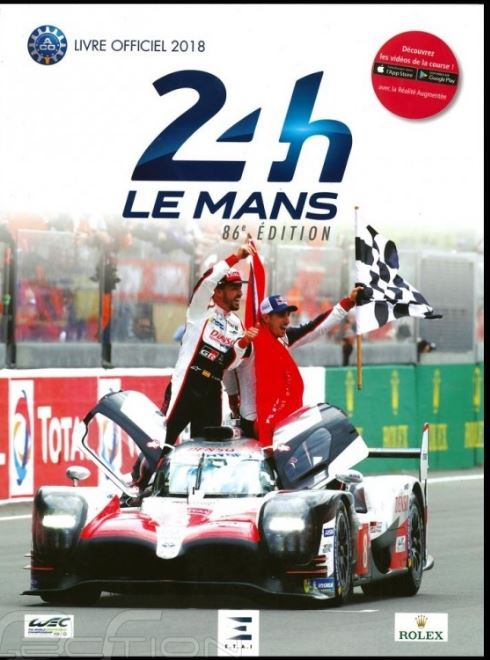
This is the official year book of the 86th Le Mans 24 Hours.
In 2018, Toyota the odds-on favourite came to the Sarthe to break its jinx and take on the Gods of Le Mans who, up till then, had always shown extreme cruelty by robbing the Japanese manufacturer of a triumph that seemed promised to it on several occasions, in particular: 1998, 1999, 2014, 2016 and 2017. Finally, the world no.1 car manufacturer broke the spell and emerged on top.
Toyota honoured its rank and scored its first victory in the Le Mans 24 Hours on its 20th attempt as a works team clinching a double into the bargain! The win went to Sébastien Buemi from Switzerland and Kazuki Nakajima from Japan, who had just missed out on victory two years earlier, backed up by double F1 world champion, Fernando Alonso. The Spaniard, who was the star of this year’s race, added another jewel to the Triple Crown (victory in the Le Mans 24 Hours, the Indy 500 and the Formula 1 World Championship title) that is the stuff of dreams.
But the three drivers had to really push as their teammates never gave them an inch. Completing the podium was Rebellion Racing and its star from the Vendée Thomas Laurent who had hit the headlines a year earlier by finishing second overall and first in LM P2. This year the no. 26 Oreca 07 dominated this category before being disqualified in post-race scrutineering gifting victory to the Signatech Matmut team and Nicolas Lapierre-André Negrao-Pierre Thiriet.
Back in the GTE Pro category after a 7-year hiatus BMW was unable to prevent the Porsche 911 RSR “Pink Pig” from winning the category thanks to Kevin Estre, Michael Christensen and Laurens Vanthoor. The Zuffenhausen firm also scooped the pool in GTE Am with the Proton Racing team co-owned by Patrick Dempsey with a little help from an 18-year-old French rookie called Julien Andlauer (remember this name).
With Rafael Nadal as starter and Jacky Ickx as Grand Marshal the latest staging of the greatest endurance race in the world was full of interest. Relive it through the many marvellous photos on display in this annual!

The Bizarre and Disturbing Adventures of Hitler’s Limousine in America
In 1938, Mercedes-Benz began production of the largest, most luxurious limousine in the world. A machine of frightening power and sinister beauty, the Grosser 770K Model 150 Offener Tourenwagen was 20 feet long, seven feet wide, and tipped the scales at 5 tons. Its supercharged, 230-horsepower engine propelled the beast to speeds over 100 m.p.h. while its occupants reclined on glove-leather seats stuffed with goose down. Armor plated and equipped with hidden compartments for Luger pistols, the 770K was a sumptuous monster with a monstrous patron: Adolph Hitler and the Nazi party.
Deployed mainly for propaganda purposes before the war, the hand-built limousines―in which Hitler rode standing in the front seat―motored through elaborate rallies and appeared in countless newsreels, swiftly becoming the Nazi party’s most durable symbol of wealth and power. Had Hitler not so thoroughly dominated the scene with his own megalomania, his opulent limousine could easily have eclipsed him.
Most of the 770Ks didn’t make it out of the rubble of World War II. But several of them did. And two of them found their way, secretly and separately, to the United States.
In The Devil’s Mercedes, author Robert Klara uncovers the forgotten story of how Americans responded to these rolling relics of fascism on their soil. The limousines made headlines, drew crowds, made fortunes and ruined lives. What never became public was how both of the cars would ultimately become tangled in a web of confusion, mania, and opportunism, fully entwined in a story of mistaken identity.
Nobody knew that the limousine touted as Hitler’s had in fact never belonged to him, while the Mercedes shrugged off as an ordinary staff car―one later abandoned in a warehouse and sold off as government surplus―turned out to be none other than Hitler’s personal automobile.
It would take 40 years, a cast of carnies and millionaires, the United States Army, and the sleuthing efforts of an obscure Canadian librarian to bring the entire truth to light.
As he recounts this remarkable drama, Klara probes the meaning of these haunting hulks and their power to attract, excite and disgust. The limousines’ appearance collided with an American populous celebrating a victory even as it sought to stay a step ahead of the war’s ghosts. Ultimately, The Devil’s Mercedes isn’t only the story of a rare and notorious car, but what that car taught postwar America about itself.

At the very edge of the atmosphere, invisible against the deep indigo sky, lurks a spy plane so sophisticated that it replaced the SR-71 Blackbird some 30 years ago. Its flat black shark-like skin deflects and absorbs all but the most advanced radars, leaving it to roam undetected while silently gathering detailed intelligence. Considered a ‘National Asset’ the U-2 Dragon Lady, in its various forms, has been in continuous military service for over six decades. Indeed she is deemed so important that she has enjoyed three separate production runs at the super-secret Lockheed ‘Skunk Works’, each time emerging with new and highly classified intelligence gathering capabilities.
Rick Bishop, a former U-2 pilot, takes the reader deep into the Black World of ‘air-breathing’ (non-satellite) reconnaissance, with a revealing and detailed account of the trials and challenges of flying a machine widely acknowledged as ‘the most dangerous aircraft in the world’, as well as revealing the personalities and adventures of some of the elite cadre of hand-selected pilots who have the right stuff to tame the Dragon Lady. From the gruelling two-week interview process, through early training flights to many exploits flying top-secret missions around the world, and his eventual rise to Commander, the author sheds new light on a world that is largely unknown outside the tight fraternity of U-2 pilots and support personnel.








